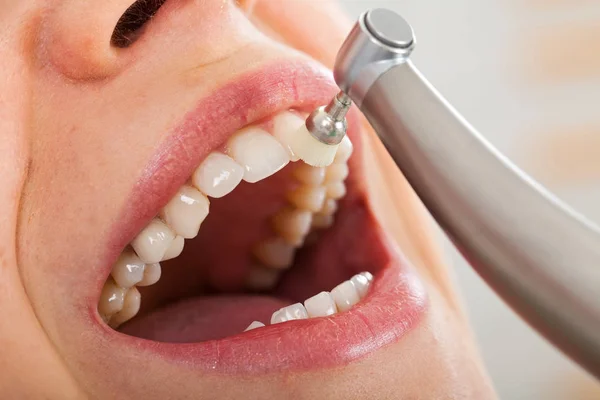What are the Best Material to used to Polish Teeth?
by info

Dental hygienists need to understand the science of tribology, which is the interaction between surfaces. Polishing procedures involve friction and wear between an abrasive agent and the tooth structure or restoration.
The type of abrasive agent, the amount applied and polishing technique impact the rate of abrasion. Dry agents, such as pumice, produce more abrasion than slurry abrasives. Cosmedent dental composite polishing technique for a gleaming smile and expertly polished teeth. Elevate your oral care skills today!
Pumice
Pumice is a silica-like volcanic glass that is used to polish enamel, gold and amalgam restorations, and acrylic denture base. It is also the abrasive agent in heavy-duty hand cleaners such as “Lava soap” and in the traditional “pumice stone.”
It provides moderate to coarse abrasion and leaves scratches less than 0.5 mcm in diameter. Fine abrasives such as aluminum silicate (Micro-Polish) and perlite (Young Dental’s D-Lish and Vera) have similar characteristics, but crush more easily and leave fewer scratches.
Remineralizing agents include a bioactive glass called NovaMin (Dentsply Nupro) and a calcium phosphate formula such as NovaFluor (Preventech’s Nada). They are added to reduce tooth sensitivity, stimulate saliva production, and increase pH.
Calcium Carbonate
In the food industry, CaCO3 is used to deacidify wine (to make it more drinkable). It is also an ingredient of some chewing gums, breadstuffs and crisps.
Dental hygienists use prophy paste containing abrasives to polish the surface of teeth and their associated restorations. These abrasives come in fine, medium and coarse grits. Fine abrasives produce less scratches, but may also leave a rougher tooth surface that is more susceptible to staining.
A remineralizing toothpaste containing calcium and phosphate, such as Voco’s Remin Pro or Carifree HA Paste, or Recaldent by GC America, may help reduce the risk of dentin sensitivity after polishing.
Perlite
After removing hard calculus (tartar) with scaling instruments, the dental hygienist polishes teeth to remove plaque and surface stains. This puts the finishing touches on preventive care.
During the polishing procedure, lubrication is used to diminish the friction between the tooth and the abrasive material. This is important to reduce the heat generated during polishing and the resulting damage to teeth and dental restorations.
The best polishing materials are those that are less abrasive than pumice, produce minimal scratches and leave a smooth, reflective surface. These include calcium carbonate, perlite and aluminum silicate. These products are used in prophy pastes and can be found in several brands including Patterson white aluminum oxide and 3M ESPE Clinpro.
Aluminum Silicate
Dental polishing is a procedure done to make teeth lustrous and smooth. It is important that the abrasive material used is mild and not too harsh because it can cause damage to the tooth structure. It is also essential to use a lubricant when polishing as this diminishes the heat generated during the process.
Coarse grit prophy pastes remove stains quickly but leave rough surfaces that can stain more easily. Medium grit prophy pastes remove stain with less abrasion, and fine grit polishes can save enamel while still providing a smooth surface that resists plaque accumulation. The best polishes are low in abrasion and contain remineralizing agents to promote remineralization of the teeth after cleaning.
Xylitol
The dental hygienist scrapes hardened plaque from the teeth in a procedure called scaling, then polishes the surface. This process removes surface stains and polishes the tooth’s appearance, putting the final touches on preventive dentistry.
There are many different kinds of abrasives used in polishing pastes. Pumice is available as a fine powder and in various grit sizes. It can also be found on abrasive disks and wheels, as well as in rubber cups impregnated with abrasive agents that do not require polishing paste.
Lubricating agents are necessary to diminish heat generated by abrasive particles. They can be added in a variety of forms including water, mouthwash, glycerin and fluoride solutions.
Novamin
Polishing as part of a prophylaxis procedure is an integral aspect of dental hygiene treatment. [1] Research suggests that polishing is effective and safe as long as hygienists use an appropriate paste, device, and technique.
Hygienists polish teeth using a rubber cup with a prophy-angle or an air polishing machine that sprays a slurry of water, baking soda, and abrasive particles to remove plaque and stains. These machines are quiet, produce minimal heat, and can access hard-to-reach places.
NovaMin is a new type of prophy paste that has been tested and found to clean as well as pumice-containing polishing products, with one-tenth the abrasion. It also occludes dentinal tubules to decrease post-prophy sensitivity.
Dental hygienists need to understand the science of tribology, which is the interaction between surfaces. Polishing procedures involve friction and wear between an abrasive agent and the tooth structure or restoration. The type of abrasive agent, the amount applied and polishing technique impact the rate of abrasion. Dry agents, such as pumice, produce more abrasion…